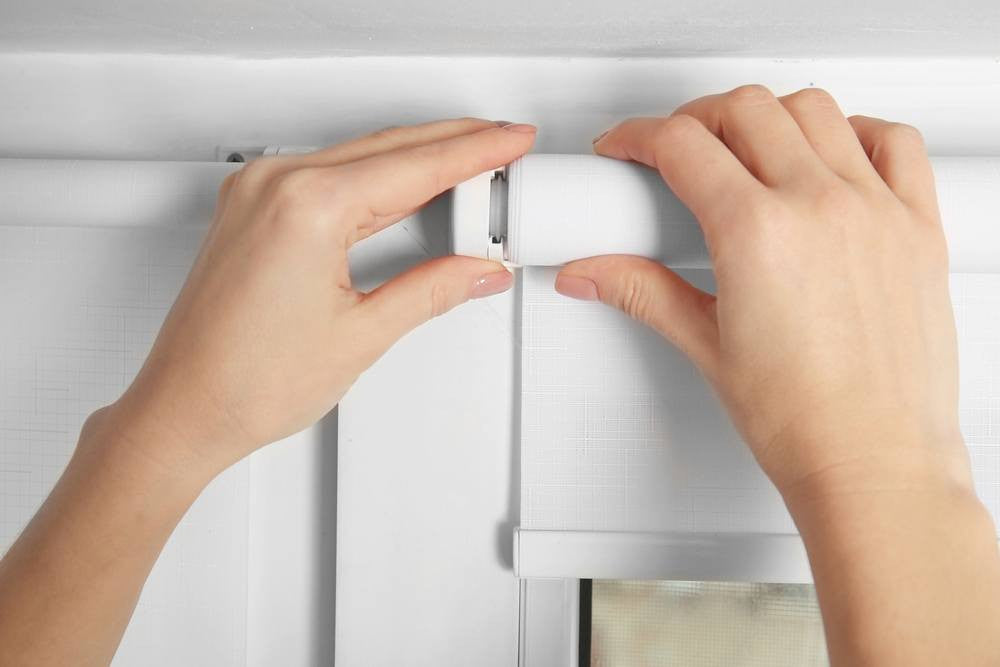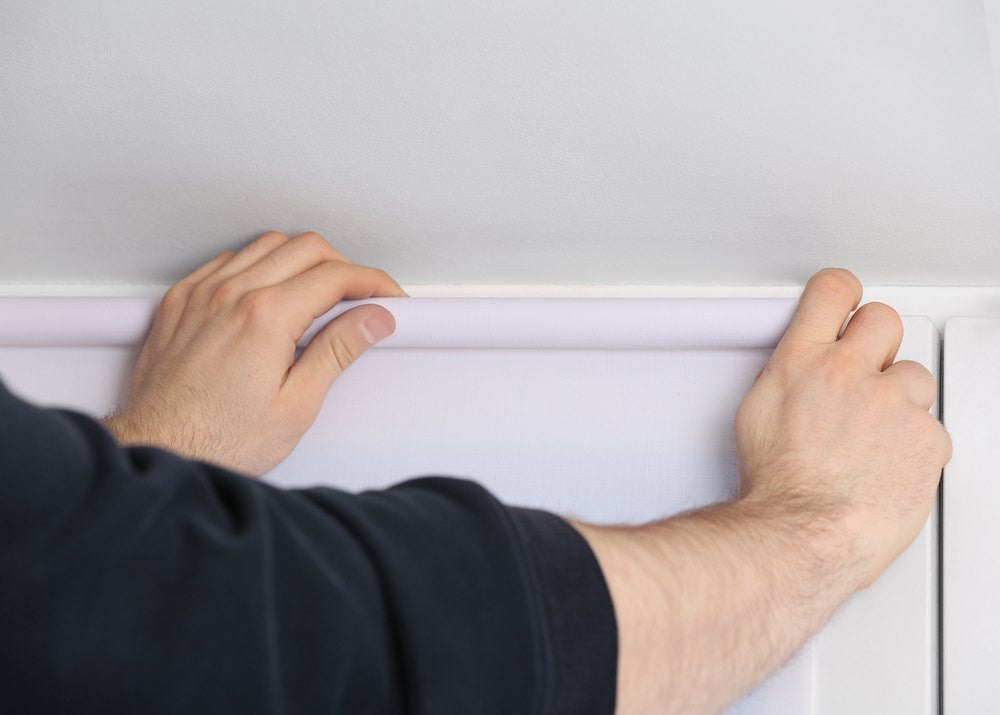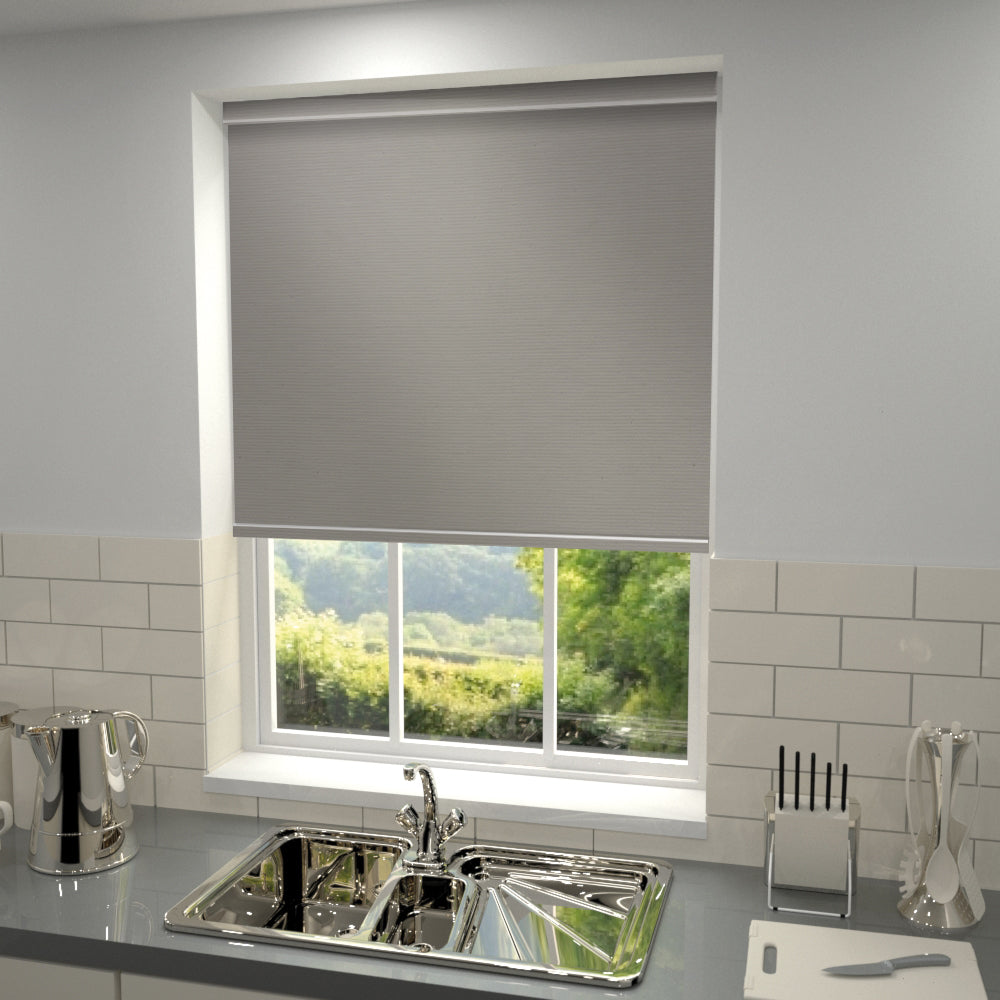
How to clean a roller blind
Before you get started it is important to check the cleaning instructions of your individual blind. Just like with clothes, roller blinds usually have a little tag which details cleaning instruction. If you blind doesn't include this then you may have to use your best judgement, by assessing what your blind is made of and then researching how to clean that type of material. If your blind is made from PVC, plastic or vinyl it probably can withstand water and cleaning chemicals, whereas if made from another material then it may require more care. If the blind cannot be washed then it will just have to be spot cleaned to remove visible stains, and we wouldn't recommend following the advice below. If your blind can be washed then the techniques below are relatively simple and easy to follow.

Regular light cleaning techniques
If your roller blind is installed in a bathroom or kitchen then it is likely to be subjected to a lot of water moisture and the occasional spillage. Even blinds in bedrooms or living spaces will be exposed to dust and will need to be cleaned regularly. To do this you will need to open your blind fully and softly wipe the blind from the top to the bottom using a clean and damp cloth or shammy. This should remove the majority of dust, grime and light spillages. If you have a stubborn stain that won't come out then you might have to use a stain remover. When doing this follow the instructions carefully as if used improperly then you can discolour your blind.
Thorough cleaning techniques
Occasionally, usually every 6-12 month, you may want to give your blind a more thorough clean. This is because spot cleaning a blind will only clean the fabric, and there are other parts to the blind, including the head rail and cord mechanism, which will attract dust, dirt and grime too. To do this you will need to remove the blind from its brackets, take it down and go through the follow steps. Note: The blind fabric needs to be removed from the mechanism and bottom rails, as parts of the blind cannot get wet. For example any metal elements may rust or seize up if they become wet, plus sometimes fabric is wound around cardboard tubes. So before proceeding you will need to remove the fabric from the mechanism and surrounding rails.

Once the blind is loose from the bracket and rails, open it fully and then lay it down flat on a clean floor. Attach a brush attachment to your vacuum and clean the blind to dislodge any pieces of dirt, dust or dead insects. Once complete you can flip the blind over and repeat this process for the back of the blind. If you don't have a brush attachment you could instead use a microfibre cloth (which will prevent dust from collecting) or go for the DIY option of an old sock.
You will then need to add warm water to your bathtub until it is half full. Add washing up powder or liquid to the water next, and if the blind is white you may also choose to add a cap full of bleach too. You can then submerge your blind into the tub, allowing them to soak for a couple of hours. While you are waiting, it is a good time to clean the headrail and bottom rail. As stated above you should not get these wet but you can dust between small crevices with a duster or lint free cloth.
You may also want to use this opportunity to oil any moving metal components - this will ensure they operate smoothly for much longer. WD40 is ideal for this and will just spray onto any moving cogs, etc. After two hours you can return to your blind fabric and give it a gentle cleaning to ensure all loose dirt has been removed, and isn't congealed on the blind. Gently wipe the blind back and forth with a soft sponge or cloth. You may also wish to use an old tooth brush, or bottle brush to remove dust and dirt from the blind mechanism and headrail.

Next you can remove the soapy water from the tub and replace with clean water. This is required to ensure there are no detergent stains on the blind, as if it is not fully removed before drying then it can leave smears or stains on the blind. If required repeat this process several times until the suds are completely removed. You are then ready to remove the blind from the bathtub and place it on a drying rack until it is completely dry. You may wish to use a lint-free cloth to remove excess water before hanging out to dry, this will save you from dripping water throughout the house, when moving the wet blind. Once fully dry you can attach the fabric back onto the rolling mechanism and the fit the blind back into the mounting brackets.












